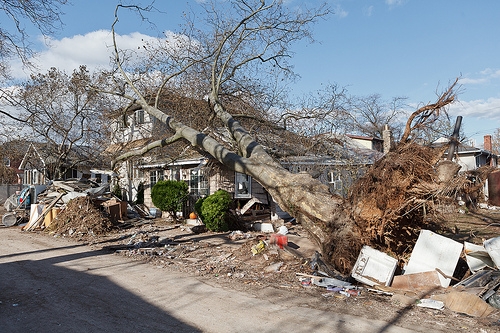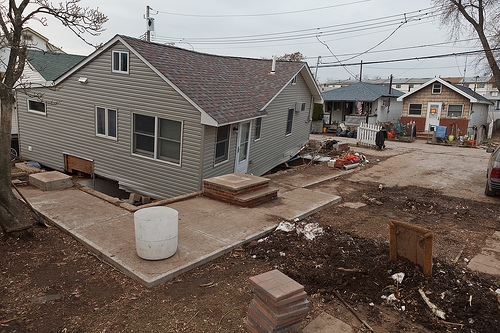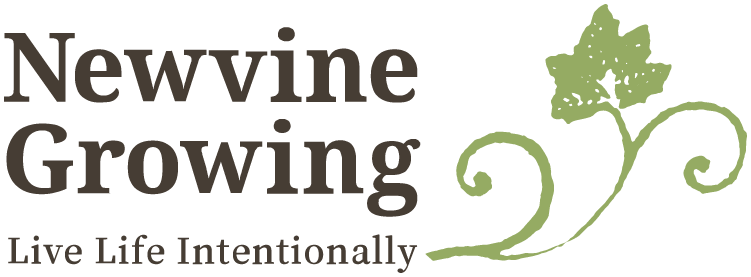The morning after Halloween, I was riding my bike through our Brooklyn neighborhood and all seemed normal.
A woman carrying a Starbucks coffee carried on a cellphone conversation about how many trick or treaters they’d gotten, a jogger wearing white earbuds and spandex dashed by, a dog walker dutifully scooped up poop.
And it all made me suddenly, intensely angry.
Though we can see New York Harbor from our corner, we were mercifully spared the wrath of Hurricane Sandy. Some trees were down, trash cans blown around, but otherwise, we were unscathed.
Just south of us, the Red Hook neighborhood where my husband has his art studio was not so lucky. Water rushed in, flooding basements, homes and businesses, leaving many people without power or heat, including the massive Red Hook Houses high-rise projects. (John’s studio was high and dry)
Many other areas were just as bad off, or worse. Gowanus, also adjacent to us, soaked in the rising water of a heavily polluted canal, and from Staten Island to New Jersey, the scenes of mangled, destroyed homes and piled up ruined belongings were heart breaking. In Breezy Point, a terrible combination of fire, high winds and flooded streets left a neighborhood that looks like a bomb was dropped.
[youtube=http://www.youtube.com/watch?v=RbMX2A545Wo]
As I came to understand the extent of Sandy’s destruction, it horrified me to see people who live a short walk from neighborhoods still bailing out water acting as if nothing was wrong.
I have never felt more like a New Yorker than I did that morning. My city — MY city — was hurting, and I had to do something.
I got on my bike in work clothes, took a few bags of cleaning supplies and headed to Red Hook.
[vimeo http://vimeo.com/53529911]
We have friends who’ve done incredible, heroic, jaw-dropping volunteer work post Sandy. Think changing diapers of elderly people and making repeated drives to take supplies to devastated areas, even as gas was scarce and it was unclear if what was left would last. I am not patting myself on the back for the volunteering I’ve done because they humble me too much to even try.
But my desire to help led me to volunteering with Occupy Sandy, an outgrowth of the Occupy Wall Street movement that stepped in with remarkable force to mobilize food, supplies and volunteers. Occupy operates an intentionally flat organization, where the first day you show up, you could be running whatever piece of the effort you jump into.
The lack of hierarchy can be frustrating, say, if you’re trying to get an answer or a decision and it’s unclear who to go to. An organization run completely by volunteers, mostly lacking disaster relief experience, will probably make some mistakes along the way.
Still, here’s a powerful philosophy of Occupy Sandy: there is no THEY, as in, “When are they going to get sleeping bags to Breezy Point?” or “Why aren’t they getting more food to Staten Island?”
With Occupy, the directive is simple — if there’s a need, try to fill it. Not just as a group, but as an individual. Step up. Call for electricians, blankets, hot food, drivers. Ask for all of it, mobilize whatever shows up, then ask again.
[youtube=http://www.youtube.com/watch?v=2K6aQSM8rY0]
My lesson, not just about Sandy but for any crisis situation: Instead of “they,” what about we and me? What can you do? These are my suggestions. I welcome your feedback.
If a huge hurricane is aiming for the East Coast while a winter storm is coming from the west and meteorologists are saying it could be the worst storm in a century, listen to them. If you live in a low-lying area and can get out, do it. Get a hotel room, crash with friends, call it a hurrication, whatever makes you safer. If you live in any of the cities that could be in the path and you aren’t evacuating, prepare your home and lay in provisions.
Plenty of people have compared Sandy to Katrina, and though far fewer people died because of Sandy, one thing those comparisons bring to mind for me is that New Orleanians know hurricanes. They deal with storms blowing into the Gulf of Mexico frequently enough that Robert Fogarty‘s Evacuteer hosted an end of hurricane season party in New Orleans (and New York) Friday.
When friends in New Orleans saw the Sandy predictions and reached out to offer suggestions, like putting food in the fridge and freezer into garbage bags before the storm for easier clean out if power fails, I took that to heart. I dutifully bought fresh flashlight batteries, made sure we had ample nonperishable food, filled the freezer with bags of water and filled the bathtub.
Take responsibility for keeping yourself and your family safe. It doesn’t take a massive storm to make it worth being prepared. It could be a house fire or a power outage or your car sliding off the road in a snow storm.
Do you keep cash on hand in case ATMs don’t work because electricity is out? Do you have warm clothes in the trunk of your car in case you have to wait a while for a tow truck? If you couldn’t get to the store for a few days, do you have enough medicine, diapers, whatever is urgent in your home?
Do you have a plan to connect with loved ones if your cellphone is out of juice? After Sandy, I was relieved each time I saw a friend’s status update announcing they were OK. I think that should be standard protocol in crises.
Instead of waiting for “they” or “them,” step in to help yourself. Imagine if everyone who had the means in our country of 300 million people gave just $10 a month to help the homeless, the hungry, the suffering. Imagine if those who couldn’t give money gave maybe an hour or two a month to a cause that resonated with them.

New York is a city of 8 million people. Surely we have the capacity to look out for each other better when we’re so physically close and there are so many of us. I heard horrifying stories of sick, elderly people living in high rises with no power who sat waiting for help for days. Knocking on our neighbors’ doors to check on them seems so simple, but if it’s not, try introducing yourself before tragedy, or maybe leave a sandwich and bottle of water at the door if you don’t live in a place where people open the doors to strangers.
AP recently reported that Sandy’s damage is estimated at $62 billion in the U.S. and $315 million in the Caribbean. At my $10 a month, it’d take nearly 800 months to pay down $62 billion with every single New Yorker participating. It’d take about a year and half if every American tithed.
That’s obviously not the solution. Insurance companies and federal agencies and nonprofits and churches and corporate sponsors are all part of the equation.
But I heard stories from New Orleanians about insurance taking forever to come through after Katrina, if it ever did, and about Red Cross and FEMA being slow to provide assistance — complaints repeated after Sandy — so in those critical first days after disaster strikes, neighbors dropping off cleaning supplies or a casserole or helping to toss out ruined belongings might be the de facto first responders.
Speaking of first responders, one many things that warmed my heart post Sandy was a tweet by New Orleans Mayor Mitch Landrieu about people helping one another and remembering to pay it forward:
Look out for each other in big and small ways.

I was deeply, truly grateful for every person who checked on us before and after Sandy. We were fine, but since we’re walking distance from the water, you might not know that if we didn’t tell you. Though I felt sheepish collecting all that unnecessary concern, it reminded me that if we were in trouble, we have an incredible network of family and friends to turn to.
Not everyone is as lucky. Can we all look around to see how we might help someone without a support network?
My dad used to do little house projects for the elderly woman who lived alone across the street. I don’t know if she had family who could have done those jobs, but Dad made it clear we were looking out for her.
I’ve heard so many incredible Sandy stories — people driving truckloads of donations from multiple states away, for example — but not everyone has the time or money to help in such a big way.
Imagine you’ve lost your home and everything in it. You’re sleeping in an emergency shelter or on a friend’s couch trying to put your life back together. If you heard an elementary school raised 50 bucks in a readathon, even if the amount was so small as to be like bailing the ocean with a teaspoon, would it at least symbolically tell you that you weren’t in it alone?
What do you think individuals and groups can do to help prepare for and recover from disasters? What have you personally done?


